Looking for a concrete finish that delivers strength and street appeal? Exposed aggregate concrete is the perfect combination of durability and design flexibility—ideal for Perth’s climate and lifestyle. At CoastCrete, we supply and install high-quality exposed aggregate for driveways, pool surrounds, alfrescos, and more across Perth and surrounding areas.
Stylish, Durable & Customisable Surfaces Built for Perth Conditions
WHAT IS EXPOSED
AGGREGATE CONCRETE?
Exposed aggregate is a decorative concrete finish where the top layer of cement is washed away to reveal the natural stones (aggregates) beneath the surface. The result is a textured, non-slip, and modern finish that adds value and character to your home or business.
You can customise the aggregate mix to suit your style—whether you prefer soft, neutral tones or bold contrast. It’s a tough, weather-resistant surface that holds up to daily wear and looks impressive year-round.
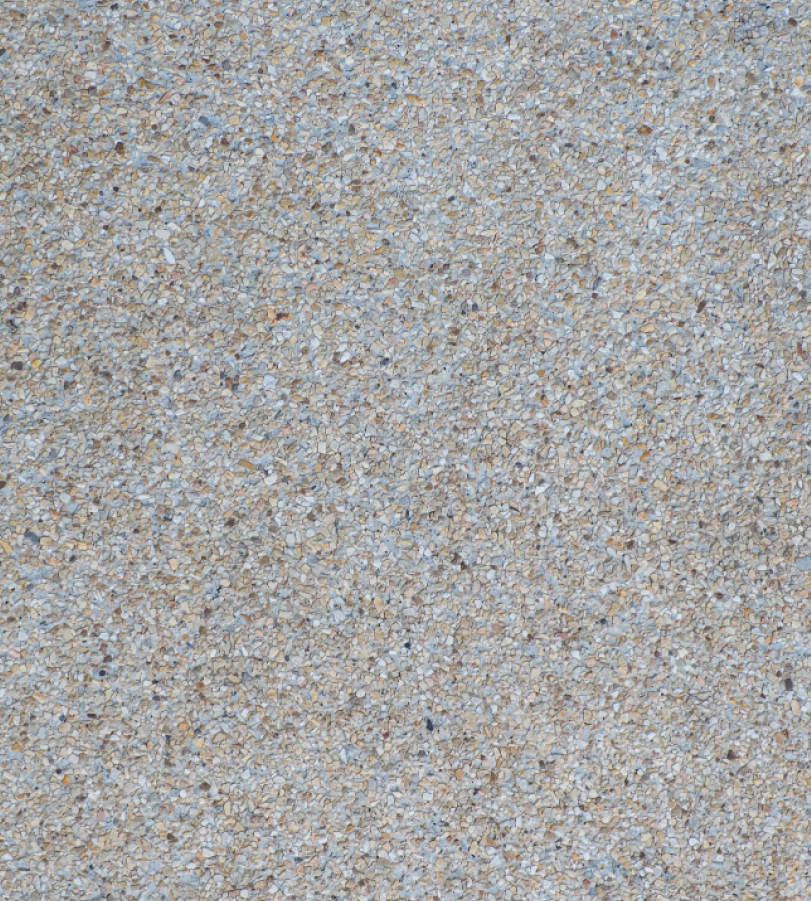
WHERE CAN YOU USE EXPOSED AGGREGATE CONCRETE?
Exposed aggregate concrete is ideal for:
Driveways – Withstands cars, trailers, and constant use
Alfresco & patios – Stylish outdoor entertaining with natural textures
Pool surrounds – Safe underfoot and resistant to water and sun
Paths & walkways – Slip-resistant and long-lasting
Commercial zones – Practical, low-fuss surface with strong kerb appeal
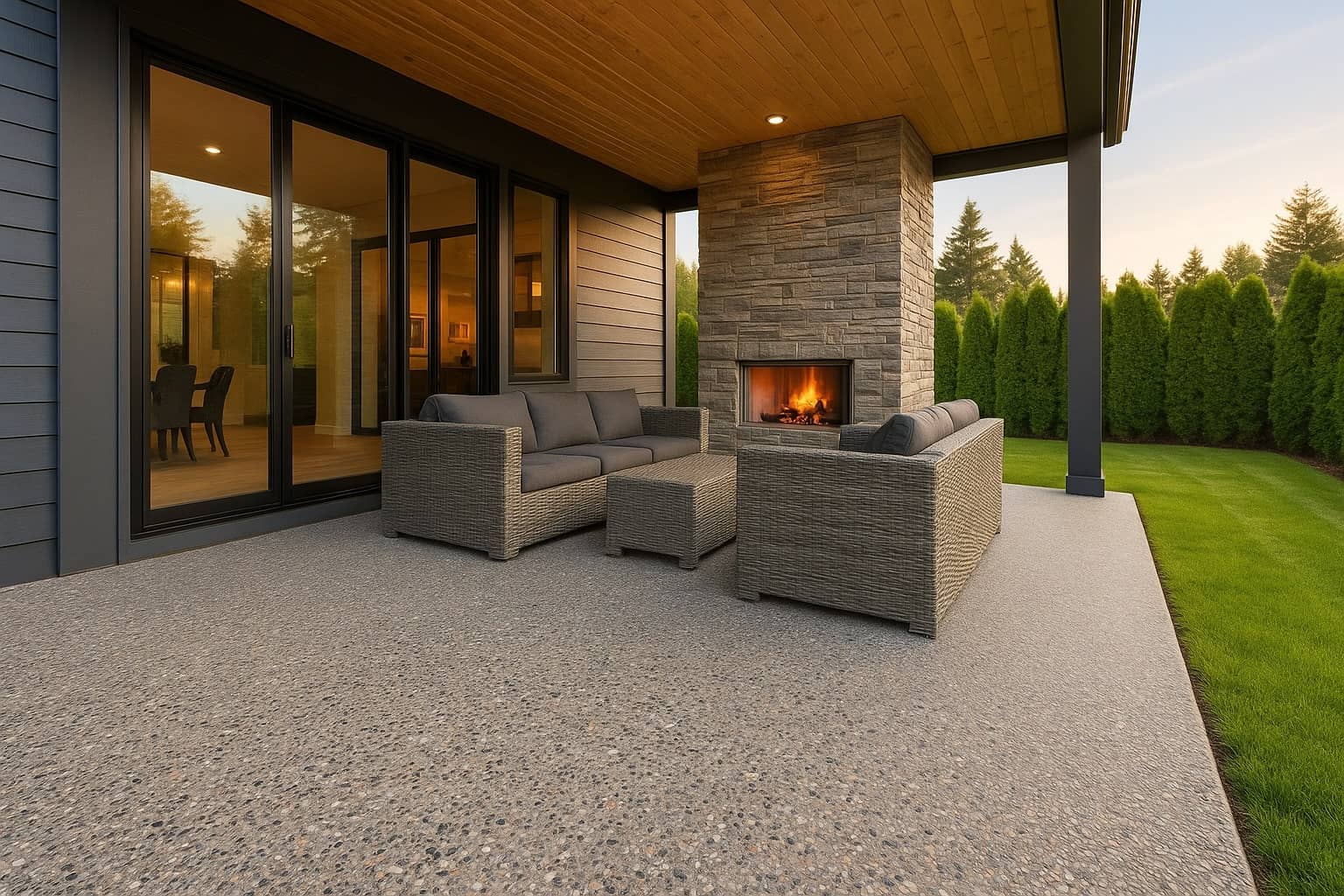
Why Choose CoastCrete
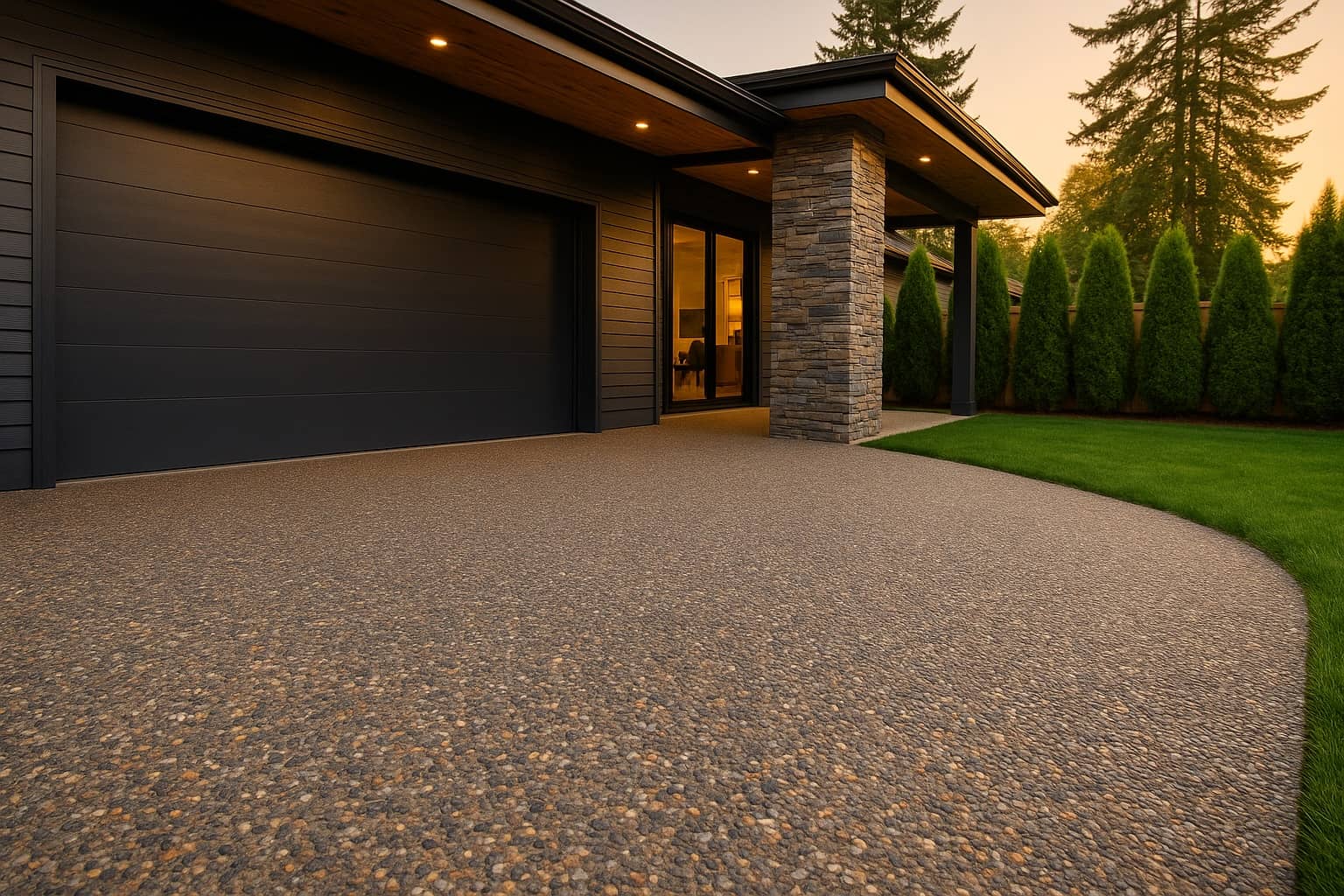
With over 15 years of experience installing exposed aggregate across Perth, CoastCrete is trusted by homeowners and builders for:
Expert advice – We help you select the right mix for your space and style
Honest pricing – Upfront quotes with no hidden surprises
On-time delivery – Projects completed as scheduled
Top-quality finish – Our skilled team ensures a clean, professional result every time
EXPOSED AGGREGATE Q&A'S
At CoastCrete, we want to help you make the right choice for your indoor or outdoor flooring, we will walk you through the process about why exposed aggregate is the best option for your home or business needs.
Exposed aggregate is for anyone who finds a textured flooring solution appealing. It has natural stones that come from quarries, riverbeds, and other interesting locations. They are then scattered into the concrete base, usually by hand. Classy, durable, and exceptional beauty – these are the characteristics of expertly installed exposed aggregate flooring by CoastCrete.
Exposed aggregate has become a popular choice among all concrete finishes. Its technique of exposing pebbles or stones to appear on the surface creates a distinctive look. The level of exposure depends on how exposed aggregate was installed, as well as the chosen materials or aggregates.
Built for Australian Conditions
Handles Perth’s heat, rain and wear without cracking or fading.
Safe & Slip Resistant
The natural texture improves traction—ideal around pools or sloped driveways.
Easy to Maintain
A basic wash and reseal every few years will keep it looking fresh.
Customisable
We offer a wide range of exposed mixes using different stone types, colours, and finishes.
Rinse every few months to remove dirt and leaves
Avoid harsh chemicals—mild detergent is enough
Re-seal every 2–3 years to protect colour and surface integrity
Address cracks early to prevent further damage
PERTH'S MOST POPULAR EXPOSED AGGREGATE FINISHES
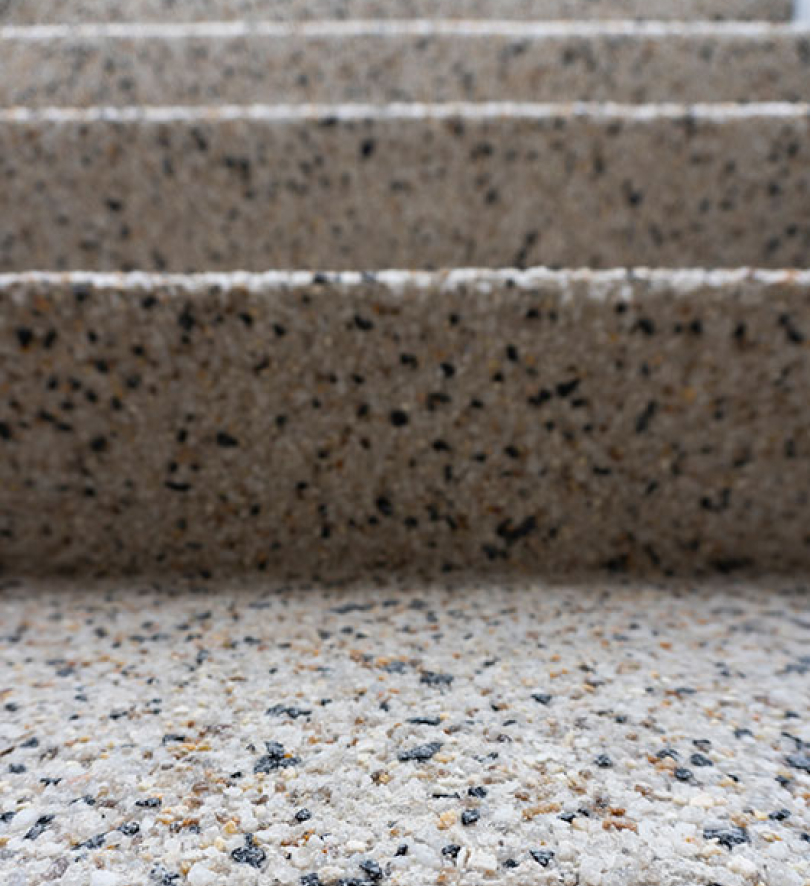
We work with a wide range of locally sourced mixes. Some of our most popular finishes include:
Salt & Pepper – Light, subtle, and timeless
Charcoal Stone Mix – Bold contrast for modern homes
Coastal Blend – Natural tones perfect for beachside suburbs
Pearl White – Crisp finish for luxury outdoor spaces
Want to see samples? We bring our finish range to your site for easy selection.
Exposed Aggregate FAQs
What exactly does exposed aggregate concrete mean?
Exposed aggregate is not a new concept. It has been in existence for over a hundred years now. This technique is believed to have started the decorative concrete trend. The name says it all. Exposed aggregate is a type of concrete in which the top layer is removed. It does not affect the functionality of the concrete surface; rather, it is intentionally done to expose the aggregate underneath.
Aggregates can include a wide variety of objects, including gravel, sand, glass, and quartzite. The finished result can be compared to a more flexible version of marble or granite.
What does the process of exposed aggregate look like?
Exposed aggregate is achieved by installing concrete first. In many cases, concrete already exists. After pouring concrete, the outer layer or “skin” of the paste (cement) is removed. The purpose is to expose the coarse decorative aggregate.
It’s easy enough to understand, but the more complex part of the process is the addition of aggregate to concrete. The most common method is through seeding the decorative aggregate onto the slab after placing concrete. Another way is by mixing aggregate into the concrete itself, which is possible if a ready mix is used, which is then combined with concrete during the batching procedure.
What are the benefits of exposed aggregate?
Exposed aggregate allows you to have a beautiful surface without worrying about the hefty cost, which is the case with other finishes. You can have spectacular effects at a reasonable price. The entire process is quick, resulting in a rugged and non-skid surface.
One more benefit of using exposed aggregate is that it is weather resistant and can take heavy loads. This is why it is a fantastic choice for almost any flatwork, such as patios, driveways, and pool decks.
Are there disadvantages that I need to know about exposed aggregate?
Yes, there are a few cons that you should be aware of with exposed aggregate. The first is that it is not a DIY type of surface. You should always have an expert hired to do the placing and installing for you, such as CoastCrete. Concrete is also prone to damage, especially without the proper sealant used, which should be correct for your location and the site itself.
For more information about the pros and cons of using exposed aggregate for your home or commercial space, we invite you to read our blog post about this topic on our exposed aggregate pros and cons post.
How are the special effects achieved?
Contractors have their own ways of improving the exposed aggregate surface. At CoastCrete, we let you take control of the look that you want to achieve. If you’re aiming to heighten the drama, we have our own creative techniques that will give you an enhanced look with complementing colours or textures, for example.
There are a number of possibilities, including using a variety of aggregates that contrast one another. We can also combine smooth finishes with rough exposed aggregate surfaces. The surrounding concrete can also be coloured in such a way that it works with the aggregate’s colour palette.
How hard is it to maintain an exposed aggregate concrete surface?
Residents and business owners love exposed aggregate because it looks attractive. At the same time, it is not as demanding as other finishes. It is highly durable and has low maintenance requirements. You only need to sweep the floor to maintain its look regularly.
If the exposed aggregate is installed for your driveway or patio, you may need to rinse the surface off with a hose from time to time. Every six months to a year, resealing may be necessary. The frequency will depend on the amount of traffic it receives.
Is exposed aggregate expensive?
Exposed aggregate is great value for money. Depending on the size of the job will determine how much it cost, for more details contact us!
Get a Quote
Total Area
x
=
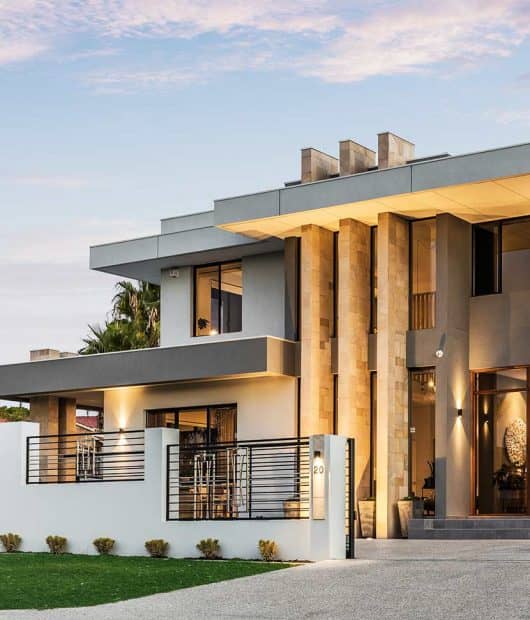
GET IN TOUCH WITH US
Give us a call on (08) 6117 5746 for a no obligation chat about your next project or send a message and we’ll get back to your shortly.